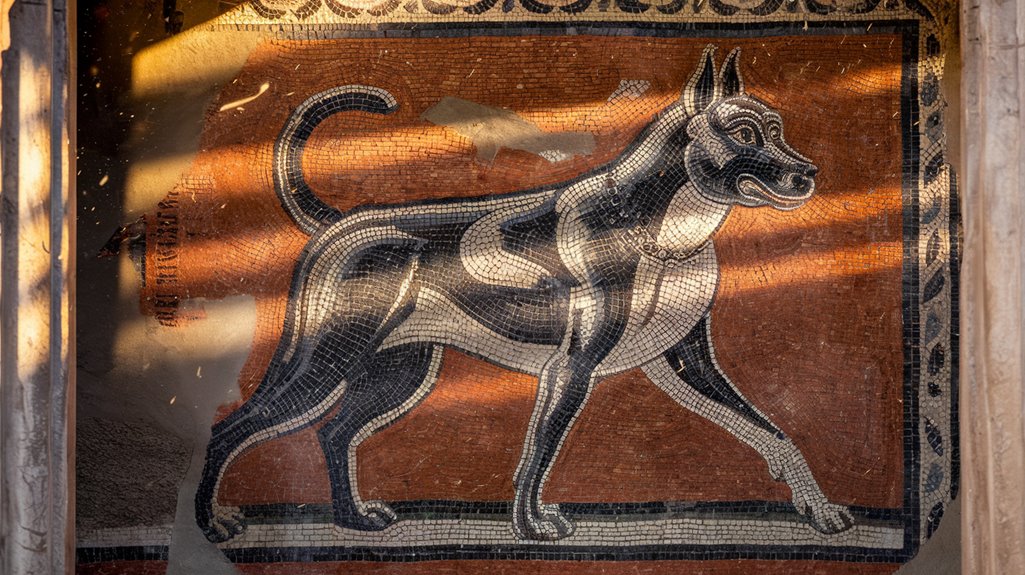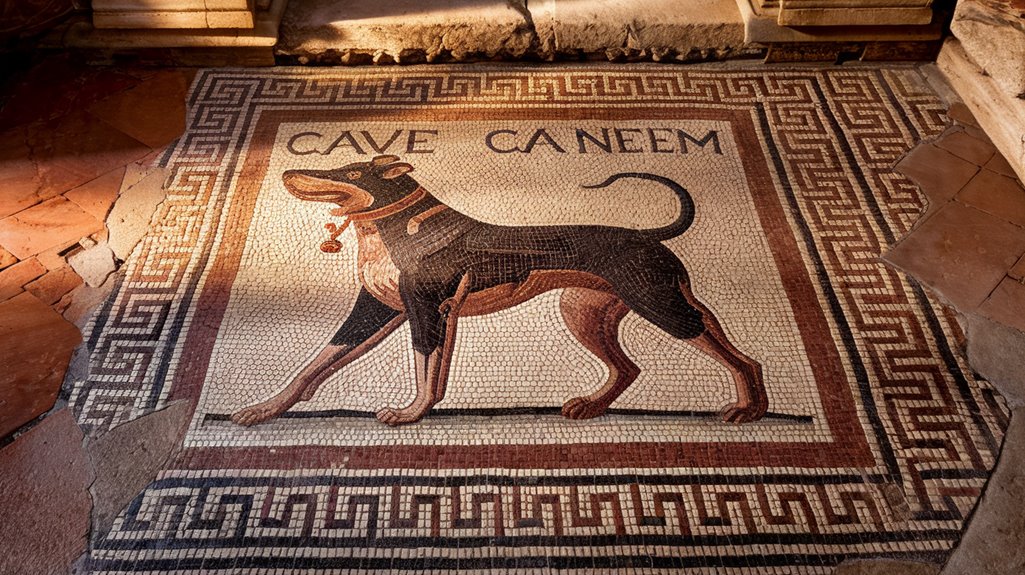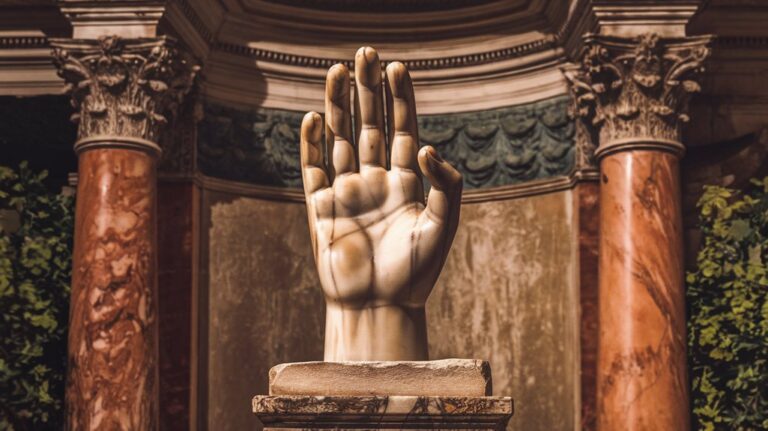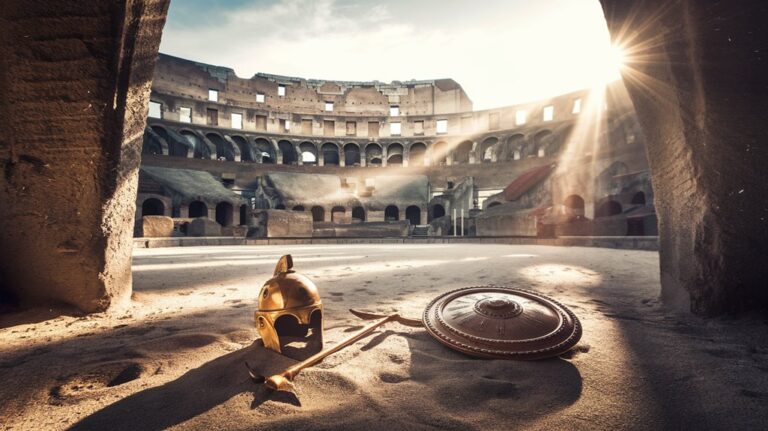An Ancient Pompeii Mosaic Warns “Beware of the Dog
You might not realize that the world's first "Beware of Dog" sign wasn't a metal placard or painted warning, but an intricate mosaic created nearly 2,000 years ago. In the ruins of Pompeii, specifically within the House of the Tragic Poet, you'll find the famous "Cave Canem" mosaic depicting a fierce black dog ready to defend its domain. This ancient security measure offers fascinating insights into how Romans protected their homes and valued their four-legged guardians.
The Discovery of Rome's First "Guard Dog" Signs
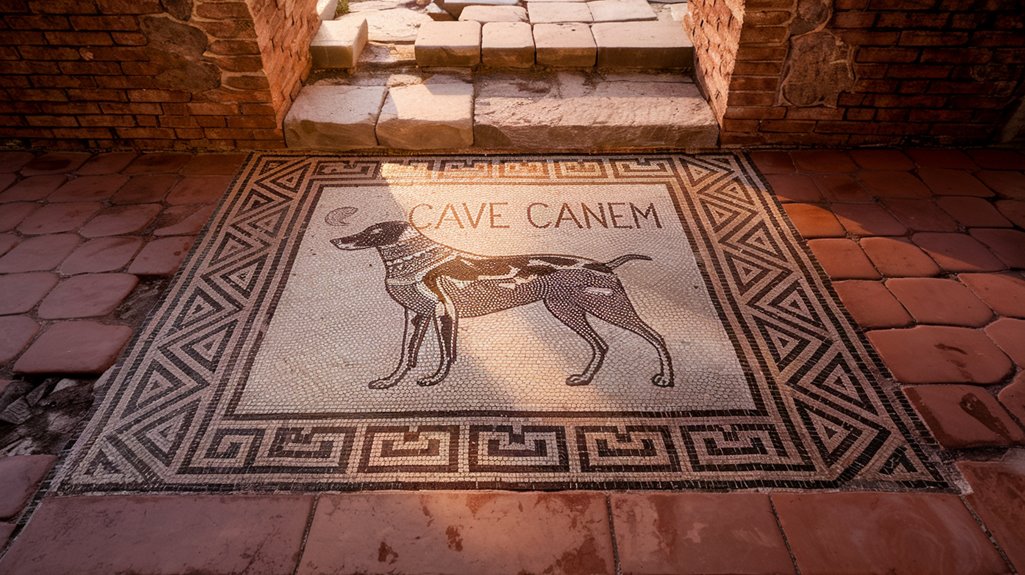
While excavating the House of the Tragic Poet in 1824, archaeologist Antonio Bonucci unearthed one of ancient Rome's most enchanting floor mosaics – the first known "Cave Canem" or "Beware of the Dog" sign.
Dating back to the 1st century CE, this remarkable piece of mosaic craftsmanship was strategically placed in the house's vestibule, alongside other detailed frescoes depicting Greek mythology.
You'll notice the clever use of a black dog in the design, which served a dual purpose: warning visitors during daylight hours while becoming virtually invisible at night.
This discovery revealed fascinating insights into ancient dog symbolism and Roman cultural practices. The mosaic's original purpose was to protect family pets from visitors entering the home. As you'd find in modern homes today, these guard dog signs weren't unique to this house – they appeared throughout Pompeii, reflecting the Romans' deep appreciation for protective, loyal canines. The mosaic remained remarkably well-preserved due to the volcanic ash burial from Mount Vesuvius's devastating eruption in 79 CE.
Life and Security in Ancient Roman Homes
Ancient Romans approached home security with remarkable ingenuity, combining architectural design with living security systems.
As you explore their security measures, you'll find they developed sophisticated fortifications and defensive structures to protect their homes from intruders. The Romans applied their mastery of physical engineering to create resilient household fortifications, much like their larger military structures. In many Roman homes, murder holes in ceilings allowed defenders to drop objects on unwanted visitors.
Animal guardianship played an essential role in Roman home security. You'd commonly find geese serving as natural alarm systems, thanks to their loud honking and territorial nature.
Dogs were equally important, as evidenced by the famous "Cave Canem" (beware of dog) mosaics. While these signs primarily warned visitors about the family dog's presence, the canines themselves were effective deterrents.
Beyond living security measures, you'd discover Romans used advanced bronze puzzle locks, often adorned with divine faces, to secure their valuables.
These locks required specific keys and precise manipulation to open.
Artistic Elements of the Cave Canem Mosaics
The famous Cave Canem mosaics of Pompeii represent more than just warnings about guard dogs – they showcase remarkable artistry and cultural significance.
When you examine these ancient works, you'll find intricate mosaic symbolism featuring growling dogs as the primary subject, though some homes displayed alternative scenes with wild boar or injured bears.
You'll notice artistic variations across different Pompeian homes, particularly in the House of the Tragic Poet and House of Orpheus. The discovery of a tethered dog at the House of Orpheus provides physical evidence that these mosaics reflected real guard dogs of the time.
The Tuscan atrium led visitors directly to these impressive entrance mosaics, creating a grand first impression of the home.
The mosaics combine striking visual elements with the Latin text "Cave Canem," creating a harmonious blend of practicality and aesthetics.
While their primary purpose was to warn visitors, these pieces also reflected the wealth and sophistication of Roman homeowners.
Today, these well-preserved works continue to provide valuable insights into ancient Roman artistic traditions and daily life.
Dogs as Protectors in Roman Society
Roman society valued dogs not only as companions but as crucial protectors who served important roles in both civilian and military life.
You'd find different dog breeds carefully selected for specific protective duties, with the powerful Molossian being the preferred choice for guarding camps and estates. Their canine loyalty made them irreplaceable in tracking enemies, as demonstrated during the 231 BCE Sardinian campaign. Writers like Varro and Columella emphasized the vital importance of guard dogs in Roman society.
You'll notice evidence of dogs' protective importance in archaeological finds throughout Pompeii, particularly in wealthy households where they safeguarded families and property. These dogs often received elaborate memorials after death, highlighting their cherished status as protectors.
Romans equipped their guardian dogs with studded collars called melium to protect them from wolf attacks.
Beyond physical protection, dogs were believed to ward off unseen threats and held deep symbolic meaning in Roman mythology, representing both nobility and protective strength.
Modern Legacy of Ancient Warning Signs
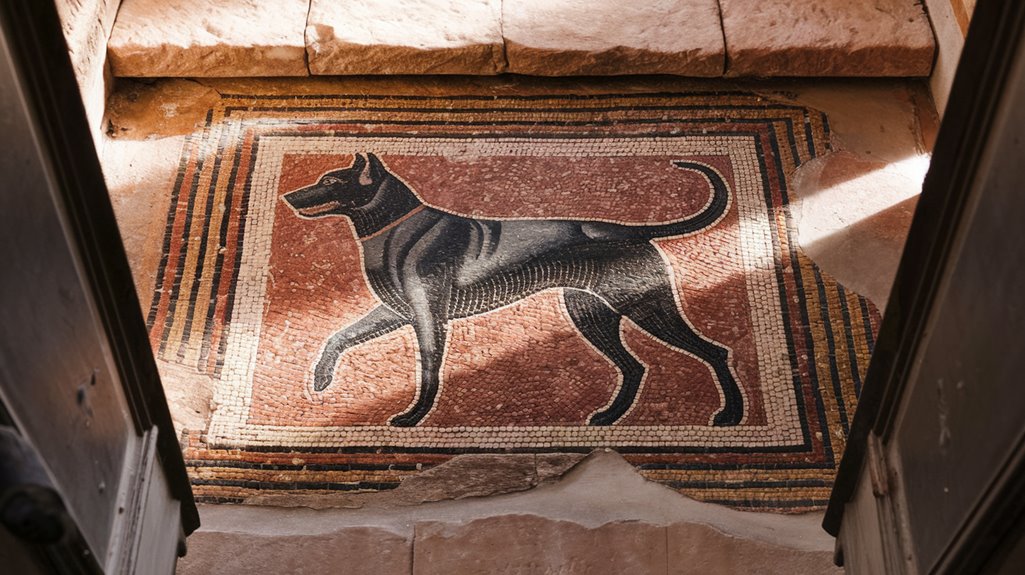
While Roman guard dogs protected homes with their physical presence, warning signs offered a more permanent form of protection that's evolved into today's universal safety system.
Similar to how ancient civilizations used stone and terracotta for public messages, today's warning signs are crafted from durable materials designed to withstand time and elements.
You'll find the cultural significance of these ancient warnings reflected in modern standardized signs, from construction sites to public spaces worldwide.
The historical evolution of warning signs spans from early petroglyphs and pictograms to today's ISO-regulated symbols.
Like the Hopi Indians who have used oral traditions to pass down vital warnings through generations, ancient warning signs served as crucial communication tools for their societies.
You can trace this development through Egyptian hieroglyphics, Roman road markers, and medieval trade signs, all leading to our current yellow triangular warnings with black pictograms.

